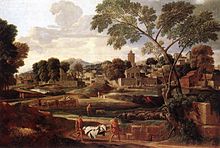
Lieutenant General Augustus Henry Lane Fox Pitt Rivers was an English officer in the British Army, ethnologist, and archaeologist. He was noted for innovations in archaeological methodology, and in the museum display of archaeological and ethnological collections. His international collection of about 22,000 objects was the founding collection of the Pitt Rivers Museum at the University of Oxford while his collection of English archaeology from the area around Stonehenge forms the basis of the collection at The Salisbury Museum in Wiltshire.

Shaftesbury is a town and civil parish in Dorset, England. It is on the A30 road, 20 miles west of Salisbury and 19.4 miles southeast of Longleat, near the border with Wiltshire. It is the only significant hilltop settlement in Dorset, being built about 215 metres above sea level on a greensand hill on the edge of Cranborne Chase.

Iwerne Minster is a village and civil parish in Dorset, England. It lies on the edge of the Blackmore Vale, approximately midway between the towns of Shaftesbury and Blandford Forum. The A350 main road between those towns passes through the edge of the village, just to the west. In the 2011 Census the civil parish had a population of 978.

Sixpenny Handley or Handley is a village and former civil parish, now in the parish of Sixpenny Handley and Pentridge, in north east Dorset, England, situated on Cranborne Chase ten miles (16 km) north east of Blandford Forum. In the 2011 census the parish had a population of 1,233. The civil parish was abolished on 1 April 2015 and merged with Pentridge to form Sixpenny Handley and Pentridge.

Farnham is a village and civil parish in North Dorset, in the south of England, on Cranborne Chase, seven miles northeast of Blandford Forum. In the 2011 census the parish had a population of 183.
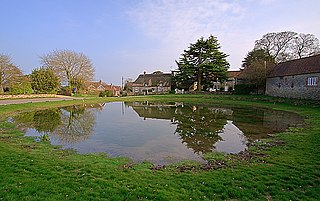
Cranborne Chase is an area of central southern England, straddling the counties Dorset, Hampshire and Wiltshire. It is part of the Cranborne Chase and West Wiltshire Downs Area of Outstanding Natural Beauty (AONB).

Tollard Royal is a village and civil parish on Cranborne Chase, Wiltshire, England. The parish is on Wiltshire's southern boundary with Dorset and the village is 6 miles (10 km) southeast of the Dorset town of Shaftesbury, on the B3081 road between Shaftesbury and Sixpenny Handley.
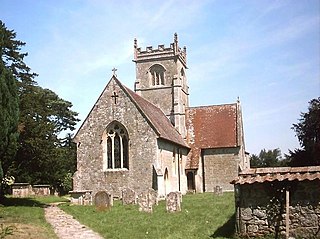
Berwick St John is a village and civil parish in southwest Wiltshire, England, about 5 miles (8 km) east of Shaftesbury in Dorset.
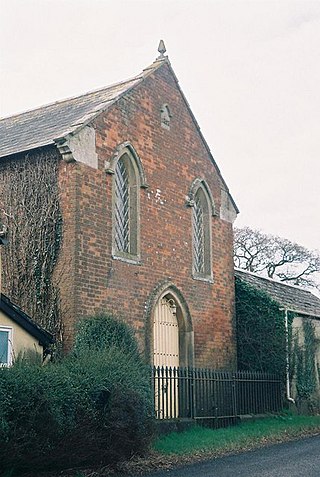
Woodcutts is a hamlet within the parish of Sixpenny Handley and is located in the north of Dorset, near to the Wiltshire border. Originally named "Woodcotes", in its present form the 18th century country estate still consists of the Manor House, the Manor Farm, a number of cottages, a school house and a chapel.
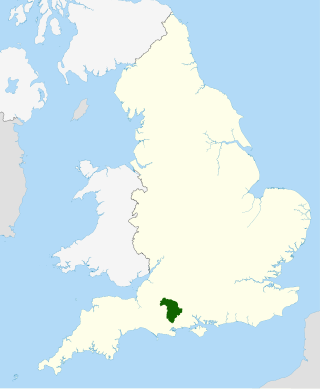
Cranborne Chase and West Wiltshire Downs is an Area of Outstanding Natural Beauty (AONB) covering 379 square miles (980 km2) of Dorset, Hampshire, Somerset and Wiltshire. It is the sixth largest AONB in England.
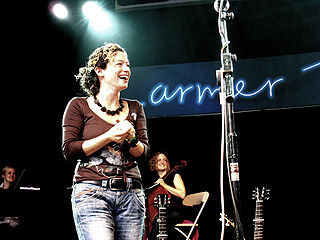
Larmer Tree Festival was a three-day music, comedy and arts festival held annually from 1990 until 2019 at the Larmer Tree Gardens, near Tollard Royal on the Wiltshire-Dorset border in England. The 2020 festival was cancelled as a result of the COVID-19 pandemic, and the event was not held in 2021, 2022 or 2023.
The Larmer Tree Festival near Tollard Royal on the Wiltshire–Dorset border is a music and arts festival which has taken place annually since 1990. There are several different stages and areas, and many diverse forms of music, performance and workshops can be found on site.
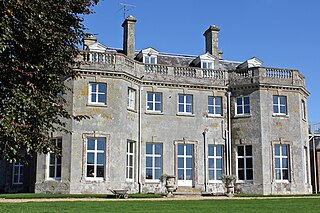
Sandroyd School is an independent co-educational preparatory school for day and boarding pupils aged 2 to 13 in the south of Wiltshire, England. The school's main building is Rushmore House, a 19th-century country house which is surrounded by the Rushmore Estate, now playing fields, woods and parkland. Sandroyd School was originally established by Louis Herbert Wellesley Wesley as a small private coaching establishment for boys hoping to enter Eton College.
Major Michael Augustus Lane-Fox Pitt-Rivers was a West Country landowner who gained notoriety in Britain in the 1950s when he was put on trial charged with buggery. This trial was instrumental in bringing public attention – and opposition – to the stringent laws against homosexual acts as they then stood.
William Gronow-Davis was an Indian-born British artist. He was the last partner of Michael Pitt-Rivers and inherited from him the Rushmore Estate in Wiltshire.

Wor Barrow is a Neolithic long barrow on Cranborne Chase, about 1 mile (1.6 km) east of Sixpenny Handley in Dorset, England. It is a scheduled monument.

Woodcutts Settlement is an archaeological site of the late Iron Age and Romano-British period on Cranborne Chase, England. It is situated about 1 mile (1.6 km) north of the hamlet of Woodcutts, and about 1.75 miles (2.8 km) north-west of the village of Sixpenny Handley, in Dorset, near the boundary with Wiltshire. It is a scheduled monument.
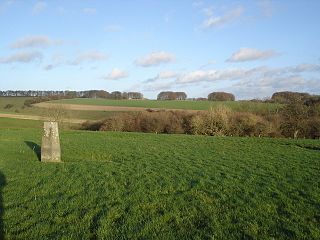
Rotherley Down Settlement is an archaeological site of the late Iron Age and Romano-British period on Cranborne Chase, England. It is about 1.5 miles (2.4 km) south of Berwick St John, and 1 mile (1.6 km) north of Tollard Royal, in Wiltshire, near the boundary with Dorset. It is a scheduled monument.
South Lodge Camp is an archaeological site of the Bronze Age, about 0.6 miles (1.0 km) south-east of the village of Tollard Royal, in Wiltshire, England. The site is on Cranborne Chase, near the boundary with Dorset. It is a scheduled monument.

King John's House is a former manor house in the south Wiltshire village of Tollard Royal, England. Just south of the church, the building has at its core a 13th-century hall house. Remodelling in the 16th and 17th centuries added wings, in part timber-framed. By 1811, it was described as a farmhouse. Augustus Pitt Rivers restored and extended the house, and opened it to the public around 1890 as a museum to display the finds from his excavations on Cranborne Chase, but by 1907 it was again a residence. Architectural historian Sir Nikolaus Pevsner describes the house as "memorable".



